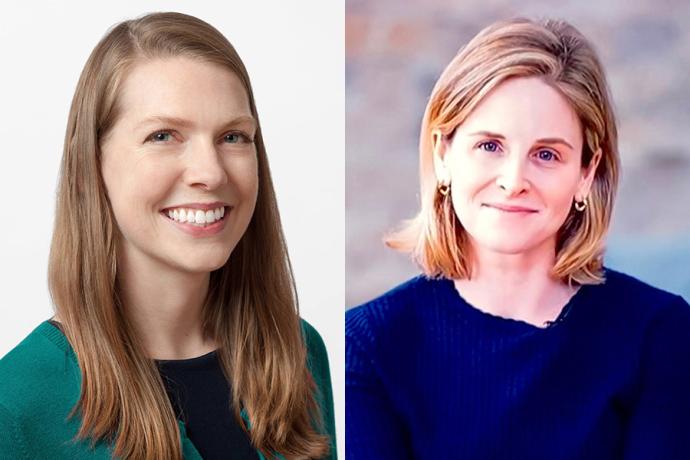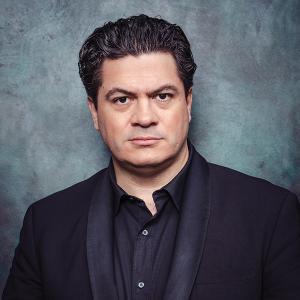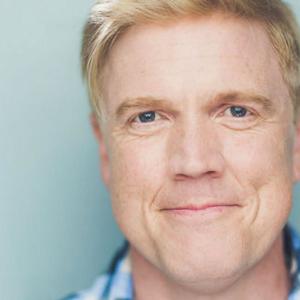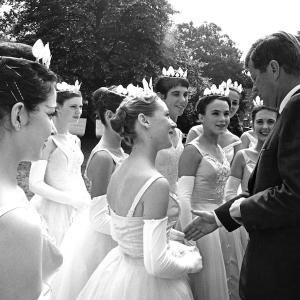Interlochen Online's next session begins May 6—enroll in any course or certificate program now.
From art to innovation: Interlochen alumni tap creative skills in STEM careers
Alumni Lauren Braun, Heather Dion, and Carrie Ott-Holland share how the capacities they honed through arts education apply to their current careers—and how the arts continue to play a meaningful role in their lives.

Carrie Ott-Holland (left) and Lauren Braun (right). Not pictured: Heather Dion.
Are you left-brained or right-brained? Does the A for “arts” belong in STEAM—or is it better off as just STEM?
In our increasingly technological world, questions like these shape discussions on everything from hiring processes to educational policies. But though these questions suggest a clear delineation between art and science, the true relationship between creativity and intellect is far less binary. (In fact, the idea of ‘left brain’ and ‘right brain’ has been debunked by neuroscientists.)
Just as fractions govern musical meter and the Golden Ratio can be applied to produce aesthetically pleasing paintings, the arts offer valuable insights and vital skills for professionals in science, mathematics, technology, medicine, and other fields.
Below, three Interlochen Arts Camp and Arts Academy alumni share how their artistic training prepared them for careers in science and technology—and how creativity continues to enrich their lives and work today.
Translating the technical
On the surface, mastering a new aria and researching the effectiveness of hybrid work appear to have little in common. But for Carrie Ott-Holland (IAC 02, IAA 03-05), a People Analyst for Klaviyo, there are many parallels between studying classical music and helping companies develop science-based approaches to employee development.
“Engaging in practice as a musician taught me work ethic, patience, and approaching problems methodically,” Ott-Holland says. “As a classical singer, I’d have to break a piece of music down into different components: my understanding and connection with text; the language and its pronunciation; the rhythm; the pitches; and how the music manifested in my voice. This process is still the way I approach analytical work today.”
As a people analyst, Ott-Holland applies several different types of research methods to understand people, processes, and systems. Beyond her problem-solving strategy, Ott-Holland taps the skills she cultivated as a performer to communicate complex ideas to stakeholders.
“The analytical work I do in the background is quite technical, and at the end of the day, I have to make a judgment of what I want conveyed to my audience,” Ott-Holland says. “I think the best musicians and scientists are committed to detail and craftsmanship, and dedicate themselves to the work ‘under the hood’ that their audiences won’t fully see or appreciate. We have to translate the technical for the broader world.”
Ott-Holland says her musical training also instilled the importance of giving, receiving, and applying constructive comments—a value that she brings to her professional relationships.
“As a music student, I would participate in a weekly studio class in which students would perform for each other and give each other feedback,” Ott-Holland says. “This practice creates a culture of learning. You realize you need to provide meaningful feedback to your peers if you want to receive meaningful feedback from them. I carry this mindset as part of how I collaborate as a researcher: How can I help advance the work of others? How can I best invite others to help me refine and improve my work?”
Ultimately, Ott-Holland’s experiences as a young vocalist provided the individualized guidance and confidence to pursue her personal and professional interests.
“Studying music from a young age gave me an opportunity to connect my ‘extracurricular’ activities to my future ambitions, and to imagine a future professional self,” she says. “It also gave me the opportunity to get one-on-one attention from adults who invested in me and saw potential in me beyond what I saw in myself. I feel extremely privileged when I think back to the caliber of teachers who instructed and coached me on an individual basis.”
Leading through collaboration
When asked how her passion for music evolved into a career in science, Arts Academy flute alumna Heather Dion (IAA 90-92) doesn’t hesitate.
“Jack Randall was the chemistry teacher at Interlochen when I was at the Academy, and he is the reason I am a chemist,” Dion says. “I had always been interested in science, but he brought the field to life.”
Dion went on to study chemistry in college, and currently serves as Program Director for Global Security Emerging Threats at the Los Alamos National Laboratory in New Mexico. Although Dion no longer plays the flute, the drive she honed as a music student is a powerful asset in her scientific career.
“One of the things that you learn very early on, especially if you’re serious enough about your art to go to boarding school or spend your whole summer at arts camp, is dedication,” she says. “Artists tend to be very driven people. The dedication that you develop through practicing your art is intense and often all-consuming. All of the skills that I developed—learning how to focus and lean deeply into something—were transferable to my work.”
Dion notes that many of her colleagues at Los Alamos also have artistic backgrounds—a testament to the link between creativity and success in STEM careers.
“There’s a really strong tie between math and music,” she says. “You find that there are a lot of non-professional musicians within the science and engineering communities; I personally know a lot of people in scientific fields who are musicians or artists of other types.”
Just as musical ensembles thrive when all members play their parts, Dion seeks a variety of voices when faced with complex challenges.
“I’m a collaborative leader, and I don’t say that lightly,” she says. “Tackling a difficult problem is about finding a diversity of opinion. You’re a single point in the problem, and it’s foolish to say that you’re the only solution. One of the things I value as a manager is transparency, and the only way to have true transparency is to show that you value other opinions.”
Despite her shift from classical music to chemistry, Dion considers her time at Interlochen a pivotal part of her personal and professional journey.
“Interlochen was a transformative experience for me,” Dion says. “Without Interlochen, I wouldn’t be the person I am today.”
Visualizing the future
Lauren Braun (IAC 94-98, IAC St 03) has been using art to share her ideas for as long as she can remember.
“As a child, I found that the way I like to express myself best was through the visual medium—through drawing and making things,” Braun says. “I started cultivating my ability to bring things to life visually in two and even three dimensions by studying the visual arts.”
Braun earned a degree in art history before pursuing advanced studies—and ultimately, a career—in human-centered design. Today, she utilizes many of her artistic skills as a Product Manager at Apple.
“My role as a ‘product person’ is to really care about the product I’m working on, which happens to be the Apple Watch right now,” she says. “I attribute my ability to understand the translation between a 3D object with 2D visuals into how a consumer might understand the product all the way back to my arts education.”
Braun frequently uses the visual and expressive capacities she’s honed since her youth to share her vision for a product with other members of her team.
“One of the biggest skills I use is visual expression—taking concepts that are amorphous and drawing or describing them in such a way that someone else can visualize them,” she says. “You have to paint a picture or tell a story about how the product is going to work, how a feature is going to come to life, or how a user is going to experience that feature. I see that skill as a direct line from my arts training, and I think that’s something that has made me successful and sets me apart from some of my peers.”
When faced with a difficult problem, Braun uses a similar approach to Ott-Holland’s—with a hands-on, visual twist.
“I like to do what one of my professors called ‘breaking the fog into cubes,’” she says. “That means methodically separating out the pieces of the problem. I often do this in a 2D way; I write or draw every aspect on Post-It notes, then arrange them visually in a space such as a whiteboard, the ground, or my desk. From there, I find the groupings, see what things are related, what things are missing, and use that map of the problem to structure a solution.”
Braun also credits her artistic training with helping her embrace uncertainty in her professional life.
“My position is all about making the best decisions, given a lot of trade-offs, and with incomplete information,” she says. “Creativity plays a role in imagining what’s missing and understanding how an experience will feel and how a product will be perceived. My arts background has helped me be comfortable being creative and starting from a blank slate."
Finding connection and inspiration
Although Ott-Holland, Dion, and Braun ultimately pursued careers outside the arts, their creative roots still serve as sources of joy and inspiration in their personal and professional lives.
Braun maintains a personal artistic practice when time allows, and has become a passionate supporter of the visual arts both in San Francisco and beyond.
“I actively collect art and travel around the world to see it,” Braun says. “My partner and I are going to the Venice Biennale this year because we’re very interested and invested in visual culture. That means I also get to be very active in the arts community here in San Francisco.”
Dion and her husband—who is also a chemist with a musical background—enjoy exploring New Mexico’s thriving artistic ecosystem.
“One of the things that is terrific about living near Santa Fe is that it’s an arts-vibrant community,” she says. “While I don’t have time to take full advantage of everything that’s available, my husband and I subscribe to the Santa Fe Symphony, and we try to attend performances at least once a month or once a quarter. We like to challenge ourselves to see shows we wouldn’t normally choose.”
Ott-Holland’s passion for the performing arts has enabled her to deepen her connection to her city while nurturing relationships.
“When I moved to San Francisco after graduate school, I quickly filled my calendar with opera, symphony, ballet, and chamber music performances,” Ott-Holland says. “I took many of my non-musician friends and colleagues—including my husband—to their first opera. When my family moved to Denver, I was off to see all kinds of performances and shows. It very quickly helped me feel part of the city.”
For both Dion and Ott-Holland, attending performances is also a way to stay connected to the Interlochen community.
“The principal second violin of the Santa Fe Opera Orchestra went to Interlochen around the same time that I attended,” Dion says. “I remember looking at the program and saying, ‘Look at that! An Interlochen alum!’”
“I always have a lot of fun attending performances and reading through the bios of performers to see if I’m watching another Interlochen alum,” Ott-Holland says.



